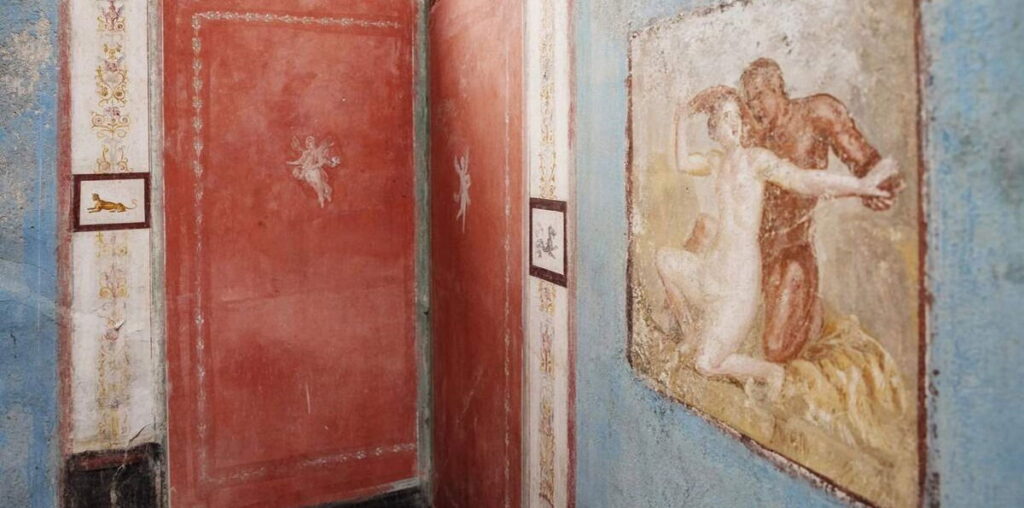
A drawing on the walls of the tiny house unearthed in the Campania region of Italy, close to Naples. (photo credit -Archaeological Park of Pompeii)
Archaeologists in Italy have discovered intricate artwork inside a small Pompeii house, buried in ash and debris from the eruption of Mount Vesuvius nearly 2,000 years ago. The Pompeii Archaeological Park said the ‘tiny house’ was found during excavations at the Insula dei Casti Amanti, a construction site in the ancient city’s central district.
The newly discovered house in Pompeii does not have an atrium
The house is a significant find for many reasons. Firstly, it doesn’t have a traditional atrium, which Pompeii Park describes as a “peculiarity.” An atrium was an open-air courtyard with basins for collecting rainwater. Atriums were later replaced with halls and courtyards, which were used for displaying portraits and trophies.
Evidence of what occurred in Pompeii as Mount Vesuvius volcano erupted
However, it’s not just the wall art, that the Archaeological Park has described as “striking.” There is also evidence in the house of what happened before the eruption. “We have archaeologists, restorers and archaeobotanists here to understand exactly how the ritual of the last sacrifice was carried out before the eruption,” said Gabriel Zuchtriegel, the park’s director, in a statement. “There are still the burnt remains of this ritual, there is the knife that was used.” Research suggests that the volcano eruption killed all the residents of Pompeii in fifteen minutes and given the ritualistic evidence discovered, the population of Pompeii were aware that the end was imminent.
Well-preserved paintings representing Greek mythology adorn the walls
The walls of the tiny house are covered with intricate drawings of images representing Greek mythology. A well-preserved fresco that depicts the tragic Greek myth of Hippolytus and Phaedra is on a wall at the back of the house, along with other walls showing scenes such as a painting believed to be of Venus and Adonis. Another is the Greek myth known as the Judgment of Paris. In one painting, a satyr, a figure that is half man and half goat, along with a nymph. are embracing. Near the painting of Hippolytus and Phaedra, plant and animal motifs are painted on an altar, which is decorated with a bird of prey holding a palm branch and two snakes facing each other.
The archaeological site is open to vistors
“This is an example of public archaeology or, as I prefer to term it, circular archaeology: preservation, research, management, accessibility and use create a virtuous circle,” stated Zuchtriegel. “Carrying out excavations and restoration work in full view of visitors but also publishing the data means giving back full transparency to society, which funds our activities through tickets, taxes and sponsorship, in terms of what we do, which is not just for the benefit of a small circle of scholars but for everyone.”

